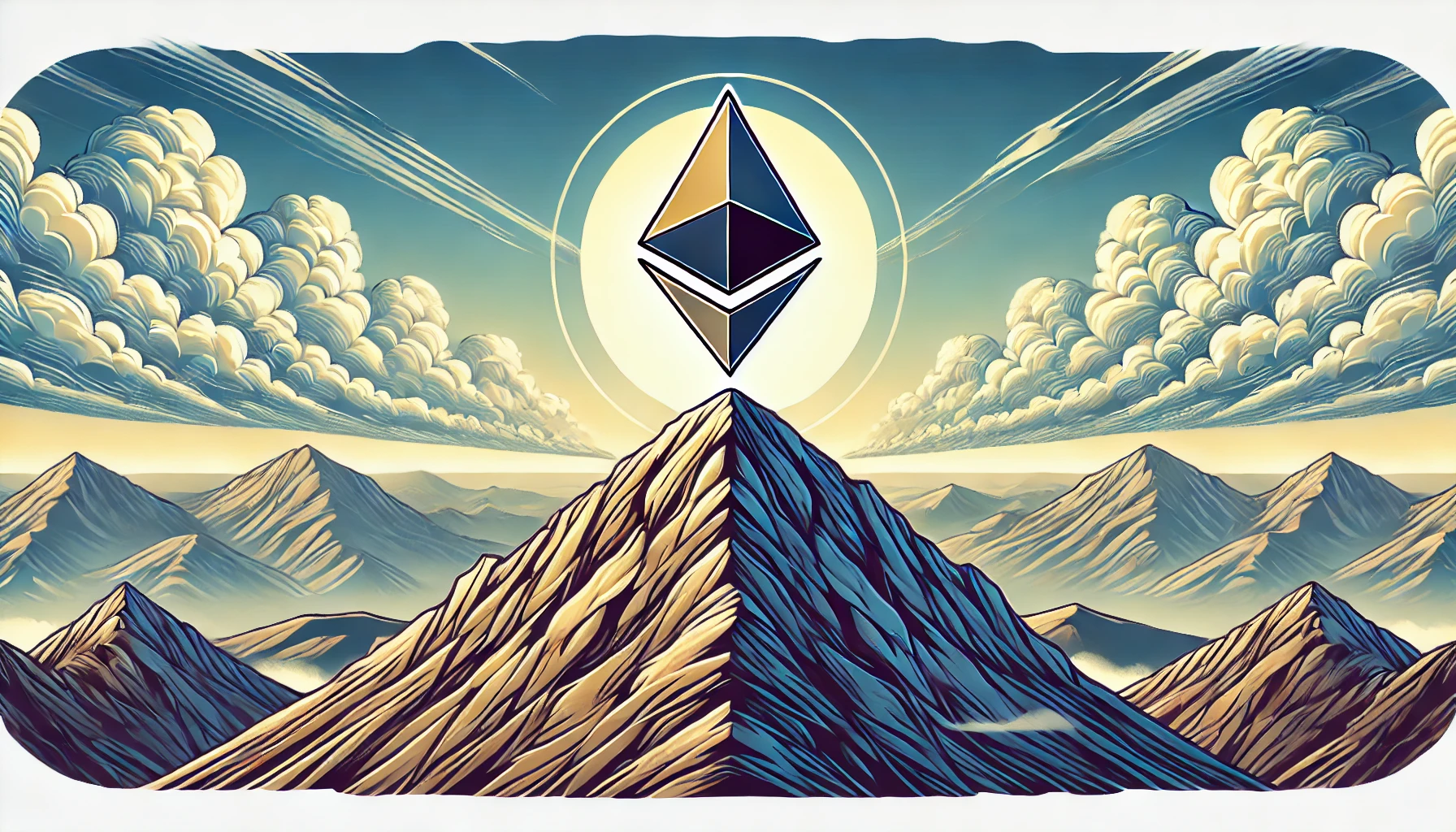21 Jun, 24
What is the Ethereum Virtual Machine (EVM)?

The Ethereum Virtual Machine (EVM) is a critical component of the Ethereum blockchain, functioning as a decentralised computer that allows developers to create and execute smart contracts. It is integral to Ethereum’s versatility, providing a platform for decentralized applications (dApps) to run without downtime, fraud, or interference from third parties. This article delves into the intricacies of the EVM, its architecture, functionality, and its role in the broader blockchain ecosystem.
Introduction
Blockchain technology has revolutionized various industries by providing a secure, transparent, and decentralized way to conduct transactions. Ethereum, one of the leading blockchain platforms, extends beyond simple transactions to enable complex applications through its smart contract functionality. At the heart of Ethereum’s ability to execute these smart contracts is the Ethereum Virtual Machine (EVM). This virtual machine is essential for Ethereum’s operations, offering a runtime environment for smart contracts. Understanding the EVM is crucial for grasping how Ethereum functions and its potential to transform industries through decentralized applications.


The Architecture of the Ethereum Virtual Machine
The EVM is a stack-based virtual machine that runs bytecode compiled from high-level smart contract languages like Solidity and Vyper. Here’s a breakdown of its architectural components:
- Bytecode and Opcodes: Smart contracts are compiled into EVM bytecode, which is a series of instructions (opcodes) that the EVM can execute. These opcodes represent low-level operations like arithmetic, logic, control flow, and storage.
- Stack: The EVM uses a stack to hold intermediate values. The stack operates on a last-in-first-out (LIFO) principle, with a maximum size of 1024 items. Each item is a 256-bit word, which matches the native word size of Ethereum.
- Memory: A temporary storage that the EVM uses during the execution of smart contracts. Unlike the stack, memory can grow dynamically but is reset between transactions.
- Storage: Persistent storage specific to each smart contract. Storage is organized as a key-value store, where each key and value is a 256-bit word. This data persists on the blockchain and is costly to read and write.
- Gas: Gas is a measure of computational effort required to execute operations. Every operation in the EVM costs a certain amount of gas, which is paid for with Ether (ETH). This mechanism prevents abuse of computational resources.
- Execution Context: The EVM executes in a context that includes the address of the executing account, the sender of the transaction, input data, and other parameters. This context is crucial for determining the behavior of smart contracts.
How the EVM Executes Smart Contracts
The process of executing a smart contract on the EVM involves several steps:
- Transaction Initiation: A transaction is initiated by an external account or another contract. This transaction contains the address of the contract to call, input data, and gas limit.
- Gas Calculation: Before execution, the EVM calculates the initial gas cost based on the transaction size and other parameters. This cost is deducted from the sender’s balance.
- Bytecode Execution: The EVM fetches and executes the bytecode instructions of the smart contract. Each instruction consumes gas, and if the gas runs out before execution completes, the transaction fails, and the state reverts.
- State Changes: Successful execution of a transaction results in state changes in the blockchain, such as updates to account balances and contract storage. These changes are recorded permanently on the blockchain.
- Finalization: After execution, any remaining gas is refunded to the sender, and the transaction is finalized and appended to the blockchain.
The Role of the EVM in Ethereum’s Ecosystem
The EVM plays a pivotal role in Ethereum’s ecosystem, enabling a variety of applications and innovations:
- Decentralized Finance (DeFi): Many DeFi protocols rely on the EVM to execute smart contracts that manage financial transactions, lending, borrowing, and trading in a decentralized manner.
- Non-Fungible Tokens (NFTs): The creation, transfer, and trading of NFTs are managed by smart contracts running on the EVM. This has opened up new possibilities for digital art, collectibles, and gaming.
- Decentralized Autonomous Organizations (DAOs): DAOs are organizations governed by smart contracts on the EVM. They enable decentralized decision-making and management of shared resources.
- Supply Chain Management: Smart contracts on the EVM can automate and verify processes in supply chains, ensuring transparency and reducing fraud.
- Identity and Access Management: The EVM can facilitate decentralized identity systems, allowing users to control their identities without relying on central authorities.
Security and Challenges of the EVM
While the EVM provides powerful capabilities, it also faces several security challenges:
- Smart Contract Vulnerabilities: Bugs and vulnerabilities in smart contract code can lead to significant financial losses. Examples include reentrancy attacks and integer overflows.
- Gas Limitations: The cost of gas can limit the complexity of smart contracts. Developers must optimize their contracts to be efficient in gas usage.
- Scalability: The EVM’s current design can struggle with scalability, leading to network congestion and high transaction fees during peak times.
- Upgradability: Once deployed, smart contracts cannot be easily upgraded. This can pose challenges for long-term projects that need to adapt to changing requirements.
- Forks and Network Upgrades: Changes to the EVM itself, such as network upgrades (hard forks), can introduce compatibility issues and require coordination across the network.
Future of the EVM
The future of the EVM is closely tied to Ethereum’s development roadmap. Key initiatives and improvements include:
- Ethereum 2.0 (Eth2): The transition to Ethereum 2.0 aims to address scalability issues through the introduction of shard chains and a Proof-of-Stake (PoS) consensus mechanism.
- Layer 2 Solutions: Technologies like rollups and sidechains aim to enhance Ethereum’s scalability by moving transactions off the main chain while still leveraging the security of the EVM.
- EVM-Compatible Chains: Other blockchain networks are adopting EVM compatibility, allowing them to run Ethereum-based smart contracts. This increases interoperability and expands the reach of the EVM.
- Improved Development Tools: Enhancements in development frameworks, debuggers, and formal verification tools will make it easier to write secure and efficient smart contracts.
- Decentralized Storage Integration: Integrating decentralized storage solutions with the EVM can provide more robust data storage options for dApps, reducing reliance on centralized storage providers.
Conclusion
The Ethereum Virtual Machine (EVM) is a cornerstone of Ethereum’s ability to execute smart contracts and run decentralized applications. Its architecture, execution model, and role in the blockchain ecosystem highlight its significance in the ongoing evolution of decentralized technologies. Despite facing security and scalability challenges, the EVM continues to evolve, driven by innovations and upgrades in the Ethereum network. Understanding the EVM is essential for anyone looking to leverage Ethereum’s capabilities or contribute to its growing ecosystem.
FAQs
- What is the Ethereum Virtual Machine (EVM)? The Ethereum Virtual Machine (EVM) is a decentralized computing platform that executes smart contracts on the Ethereum blockchain. It enables the creation and execution of decentralized applications (dApps).
- How does the EVM execute smart contracts? The EVM executes smart contracts by processing bytecode instructions compiled from high-level languages like Solidity. It uses a stack-based architecture and calculates gas costs for each operation to manage computational resources.
- What is the role of gas in the EVM? Gas is a measure of the computational effort required to execute operations in the EVM. It ensures that resources are used efficiently and prevents abuse. Users pay for gas with Ether (ETH).
- What are some common security challenges in the EVM? Common security challenges include smart contract vulnerabilities (e.g., reentrancy attacks), gas limitations, scalability issues, upgradability difficulties, and compatibility issues during network upgrades.
- What improvements are expected for the EVM in the future? Future improvements for the EVM include enhancements from Ethereum 2.0 (Eth2), Layer 2 scaling solutions, increased interoperability with EVM-compatible chains, better development tools, and integration with decentralized storage solutions
About Zerocap
Zerocap provides digital asset liquidity and digital asset custodial services to forward-thinking investors and institutions globally. For frictionless access to digital assets with industry-leading security, contact our team at hello@zerocap.com or visit our website www.zerocap.com
DISCLAIMER
This material is issued by Zerocap Pty Ltd (Zerocap), a Corporate Authorised Representative (CAR: 001289130) of AFSL 340799. Material covering regulated financial products is issued to you on the basis that you qualify as a “Wholesale Investor” for the purposes of Sections 761GA and 708(10) of the Corporations Act 2001 (Cth) (Sophisticated/Wholesale Client). This material is intended solely for the information of the particular person to whom it was provided by Zerocap and should not be relied upon by any other person. The information contained in this material is general in nature and does not constitute advice, take into account the financial objectives or situation of an investor; nor a recommendation to deal. Any recipients of this material acknowledge and agree that they must conduct and have conducted their own due diligence investigation and have not relied upon any representations of Zerocap, its officers, employees, representatives or associates. Zerocap has not independently verified the information contained in this material. Zerocap assumes no responsibility for updating any information, views or opinions contained in this material or for correcting any error or omission which may become apparent after the material has been issued. Zerocap does not give any warranty as to the accuracy, reliability or completeness of advice or information which is contained in this material. Except insofar as liability under any statute cannot be excluded, Zerocap and its officers, employees, representatives or associates do not accept any liability (whether arising in contract, in tort or negligence or otherwise) for any error or omission in this material or for any resulting loss or damage (whether direct, indirect, consequential or otherwise) suffered by the recipient of this material or any other person. This is a private communication and was not intended for public circulation or publication or for the use of any third party. This material must not be distributed or released in the United States. It may only be provided to persons who are outside the United States and are not acting for the account or benefit of, “US Persons” in connection with transactions that would be “offshore transactions” (as such terms are defined in Regulation S under the U.S. Securities Act of 1933, as amended (the “Securities Act”)). This material does not, and is not intended to, constitute an offer or invitation in the United States, or in any other place or jurisdiction in which, or to any person to whom, it would not be lawful to make such an offer or invitation. If you are not the intended recipient of this material, please notify Zerocap immediately and destroy all copies of this material, whether held in electronic or printed form or otherwise.
Disclosure of Interest: Zerocap, its officers, employees, representatives and associates within the meaning of Chapter 7 of the Corporations Act may receive commissions and management fees from transactions involving securities referred to in this material (which its representatives may directly share) and may from time to time hold interests in the assets referred to in this material. Investors should consider this material as only a single factor in making their investment decision.
Like this article? Share
Latest Insights
Weekly Crypto Market Wrap: 26th August 2025
Zerocap is a market-leading digital asset firm, providing trading, liquidity and custody to forward-thinking institutions and investors globally. To learn more, contact the team at
Weekly Crypto Market Wrap: 18th August 2025
Zerocap is a market-leading digital asset firm, providing trading, liquidity and custody to forward-thinking institutions and investors globally. To learn more, contact the team at
Weekly Crypto Market Wrap: 11th August 2025
Zerocap is a market-leading digital asset firm, providing trading, liquidity and custody to forward-thinking institutions and investors globally. To learn more, contact the team at
Receive Our Insights
Subscribe to receive our publications in newsletter format — the best way to stay informed about crypto asset market trends and topics.



 Share
Share  Tweet
Tweet  Post
Post 